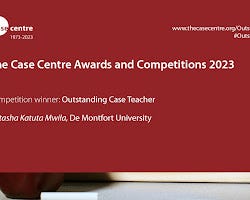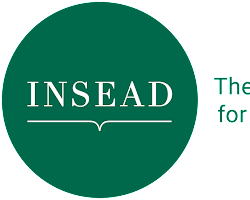Abstract
This paper explores the concept of minimalism in the context of a 5D state of consciousness, highlighting the power of the conscious mind and the ability to program the subconscious mind. Minimalism, as a lifestyle, emphasizes the intentional reduction of physical possessions, distractions, and mental clutter. By embracing minimalism, individuals can cultivate a heightened state of awareness and clarity, enabling a deeper connection with their conscious and subconscious minds.
The paper delves into the concept of a 5D state of consciousness, which transcends traditional notions of time and space. In this state, individuals experience expanded awareness, interconnectedness, and a heightened sense of intuition. By adopting minimalist practices, individuals can create an environment conducive to deepening their 5D consciousness.
Furthermore, the paper explores the power of the conscious mind in shaping our reality. Through conscious intention and focused attention, individuals can direct their thoughts, emotions, and actions, influencing their experiences and outcomes. The conscious mind acts as a programming tool for the subconscious mind, which operates on autopilot, storing beliefs, habits, and patterns. By consciously programming the subconscious mind with positive and empowering beliefs, individuals can align their thoughts and actions with their desired outcomes.
The paper also discusses various techniques and practices that can aid in programming the subconscious mind. These include visualization, affirmations, meditation, and mindfulness. By consistently engaging in these practices, individuals can rewire their subconscious programming, eliminating self-limiting beliefs and aligning themselves with their highest potential.
In conclusion, this paper highlights the profound impact of minimalism on a 5D state of consciousness. By embracing minimalism, individuals can declutter their physical and mental spaces, allowing for heightened awareness and clarity. Through conscious programming of the subconscious mind, individuals can align their thoughts, beliefs, and actions with their desired outcomes, ultimately empowering themselves to live a more purposeful and fulfilling life.
Introduction:
Minimalism is a lifestyle that emphasizes living with less. It is about decluttering your physical space, your digital space, and your mind. Minimalism can be a powerful tool for spiritual growth and awakening. When you let go of the unnecessary, you create space for more important things in your life, such as love, relationships, and experiences.
In a 5D state of consciousness, you are more aware of your thoughts, feelings, and emotions. You are also more connected to your intuition and higher self. When you combine minimalism with a 5D state of consciousness, you can create a life that is truly aligned with your values and purpose.
Pros of Minimalism in a 5D State of Consciousness:
More freedom: When you have less stuff, you have less to worry about. You are not tied down to possessions or obligations. You are free to move around and explore new opportunities.
Less stress: Clutter can be a major source of stress. When you declutter your physical space, you also declutter your mind. You become more clear-headed and focused.
More focus: When you have less distractions, you are able to focus on what is truly important. You can achieve your goals more easily and efficiently.
More creativity: Minimalism can free up your creativity. When you are not bogged down by possessions, you have more time and energy to explore your passions.
More connection to the present moment: Minimalism can help you to live more in the present moment. When you are not attached to the past or the future, you can appreciate the beauty of the present moment.
Cons of Minimalism in a 5D State of Consciousness:
Can be challenging: Minimalism is not for everyone. It can be challenging to let go of possessions that you have been attached to for a long time.
Not for everyone: Minimalism is not a one-size-fits-all solution. What works for one person may not work for another.
Can be lonely: Minimalism can lead to loneliness if you do not have a strong support system. It is important to find ways to connect with others who share your values.
Suggestions on How to Become a Minimalist in a 5D State of Consciousness:
Start by decluttering your physical space. This is the most important step. Get rid of anything that you do not use or love.
Declutter your digital space. This includes your email, social media accounts, and cloud storage.
Get rid of anything that is not essential.
Meditate.** Meditation is a great way to clear your mind and connect with your inner self.
Practice yoga.** Yoga is another great way to connect with your body and mind.
Practice gratitude.** Gratitude is a powerful emotion that can help you to appreciate the simple things in life.
Collegiate Research and Studies
Collegiate research and study on the topic of minimalism in a 5D state of consciousness, focusing on the power of the conscious mind and programming the subconscious mind, can contribute valuable insights and expand our understanding of these concepts. This area of study offers an interdisciplinary approach, combining elements from psychology, neuroscience, philosophy, and spirituality to explore the potential impacts of minimalism on consciousness and personal development.
Collegiate research in this field can involve both theoretical and empirical investigations. Theoretical studies may delve into the philosophical foundations of minimalism and its connection to consciousness, exploring concepts such as mindfulness, presence, and self-awareness. These studies can analyze the relationship between minimalism and a 5D state of consciousness, examining how minimalism practices can facilitate an expanded awareness and a deeper connection with the conscious mind.
Empirical research on this topic can involve various methodologies, such as surveys, interviews, and experimental designs. Researchers may investigate the experiences and perspectives of individuals who have embraced minimalism and explore how it has influenced their consciousness and overall well-being. They can also examine the effects of minimalist practices on cognitive processes, emotional well-being, and personal growth. Studies may explore the impact of minimalism on stress reduction, decision-making, creativity, and the ability to cultivate a more positive mindset.
In addition, collegiate research can explore the role of programming the subconscious mind in the context of minimalism and a 5D state of consciousness. This can involve examining techniques such as visualization, affirmations, and meditation, and investigating how these practices affect subconscious beliefs and behaviors. Research can explore the potential of subconscious programming in promoting positive change, self-empowerment, and aligning one's thoughts and actions with desired outcomes.
The findings from collegiate research in this area can contribute to both academic knowledge and practical applications. They can inform individuals seeking to embrace minimalism as a means to enhance their consciousness and personal development. Additionally, the research can provide insights that may be relevant to fields such as psychology, well-being, and self-improvement.
Overall, collegiate research and study of minimalism in a 5D state of consciousness, focusing on the power of the conscious mind and programming the subconscious mind, holds the potential to deepen our understanding of these phenomena and their implications for personal growth and well-being.
Conclusion:
Minimalism in a 5D state of consciousness is a powerful way to live a more fulfilling and meaningful life. It can help you to reduce stress, increase focus, and connect with your inner self. If you are interested in exploring minimalism, I encourage you to start by decluttering your physical and digital space. Then, you can start to incorporate other practices, such as meditation and yoga, into your life. With time and effort, you can create a life that is truly aligned with your values and purpose.
Books
Here are some book recommendations that explore the topics of minimalism, consciousness, and programming the subconscious mind:
1. "The Power of Now" by Eckhart Tolle - This influential book explores the concept of living in the present moment and cultivating a state of heightened consciousness.
2. "The Life-Changing Magic of Tidying Up" by Marie Kondo - In this book, Marie Kondo introduces the KonMari method of decluttering and organizing, which aligns with the principles of minimalism and can help create a physical and mental space conducive to a 5D state of consciousness.
3. "Breaking the Habit of Being Yourself: How to Lose Your Mind and Create a New One" by Dr. Joe Dispenza - Dr. Joe Dispenza explores the relationship between the mind, body, and consciousness, providing insights into how we can reprogram our subconscious mind to create positive change in our lives.
4. "The Minimalist Mindset: The Practical Path to Making Your Passions a Priority and to Retaking Your Freedom" by Danny Dover - This book offers practical guidance on embracing minimalism and decluttering various aspects of life, allowing for a more intentional and conscious existence.
5. "Subliminal: How Your Unconscious Mind Rules Your Behavior" by Leonard Mlodinow - Leonard Mlodinow delves into the workings of the subconscious mind, exploring how it influences our thoughts, behavior, and decision-making processes.
6. "The Power of Your Subconscious Mind" by Joseph Murphy - This classic book provides insights into the power of the subconscious mind and offers techniques for harnessing its potential to achieve personal and professional success.
These books provide valuable insights and practical guidance for those interested in exploring minimalism, consciousness, and programming the subconscious mind. Each offers unique perspectives and techniques that can assist individuals in their journey towards a more conscious and intentional way of living.
Journals
Here are some ideas for journals on Minimalism in a 5D State of Consciousness: The Power of the Conscious Mind and Programming the Subconscious Mind:
Journaling about your decluttering process: As you go through the process of decluttering your physical and digital space, keep a journal to track your progress and your thoughts and feelings about the process. This can be a helpful way to stay motivated and to reflect on the benefits of minimalism.
Journaling about your meditation and yoga practice: If you are incorporating meditation and yoga into your life, journaling about your experiences can be a great way to track your progress and to deepen your understanding of these practices. You can write about your thoughts and feelings during and after your sessions, as well as any insights or revelations that you have.
Journaling about your goals and intentions: If you are interested in using minimalism to create a more fulfilling and meaningful life, journaling about your goals and intentions can be a helpful way to stay focused and to track your progress. You can write about what you want to achieve in your life, as well as the steps that you are taking to achieve your goals.
Journaling about your experiences in a 5D state of consciousness: If you are open to the possibility of experiencing a 5D state of consciousness, journaling about your experiences can be a helpful way to document your journey and to share your insights with others. You can write about what you experienced, how you felt, and what you learned from the experience.
These are just a few ideas for journals on Minimalism in a 5D State of Consciousness: The Power of the Conscious Mind and Programming the Subconscious Mind. The possibilities are endless!
Here are some additional tips for journaling about minimalism in a 5D state of consciousness:
* Be honest with yourself about your thoughts and feelings.
* Be open to new experiences and insights.
* Be patient with yourself. The process of minimalism and 5D consciousness is a journey, not a destination.
* Have fun! Journaling can be a great way to explore your thoughts, feelings, and experiences.
Resources and Solutions
Here are some resources and sources that can provide further information on the topic of minimalism in a 5D state of consciousness, the power of the conscious mind, and programming the subconscious mind:
1. Websites and Blogs:
- Becoming Minimalist (https://www.becomingminimalist.com/): A popular blog that explores minimalism as a lifestyle and its impact on various aspects of life.
- Mindvalley Blog (https://blog.mindvalley.com/): Mindvalley offers articles and resources on personal growth, consciousness, and self-improvement, including topics related to the power of the mind and subconscious programming.
- Zen Habits (https://zenhabits.net/): This blog by Leo Babauta explores simplicity, mindfulness, and minimalism, offering practical tips and insights on living a more conscious and intentional life.
2. Books:
- "The Power of Now" by Eckhart Tolle
- "The Life-Changing Magic of Tidying Up" by Marie Kondo
- "Breaking the Habit of Being Yourself: How to Lose Your Mind and Create a New One" by Dr. Joe Dispenza
- "The Minimalist Mindset: The Practical Path to Making Your Passions a Priority and to Retaking Your Freedom" by Danny Dover
- "Subliminal: How Your Unconscious Mind Rules Your Behavior" by Leonard Mlodinow
- "The Power of Your Subconscious Mind" by Joseph Murphy
3. Research Papers and Academic Journals:
- Journal of Consciousness Studies: This peer-reviewed journal focuses on interdisciplinary research on consciousness, including topics related to minimalism and consciousness.
- International Journal of Transpersonal Studies: This journal publishes research on transpersonal psychology, which explores the connection between consciousness, spirituality, and personal growth.
4. TED Talks and Online Lectures:
- "The Art of Minimalism" by Dominique Loreau: In this TEDx Talk, Dominique Loreau shares insights on the philosophy and benefits of minimalism.
- "The Power of Consciousness" by Peter Russell: This talk explores the nature of consciousness and its potential to shape our reality.
- "The Science of Mindfulness" by Dr. Shauna Shapiro: Dr. Shapiro discusses the research behind mindfulness practices and their impact on the mind and well-being.
These resources and sources offer a range of perspectives and insights on minimalism, consciousness, and programming the subconscious mind. They can serve as starting points for further exploration and research in this fascinating area.







